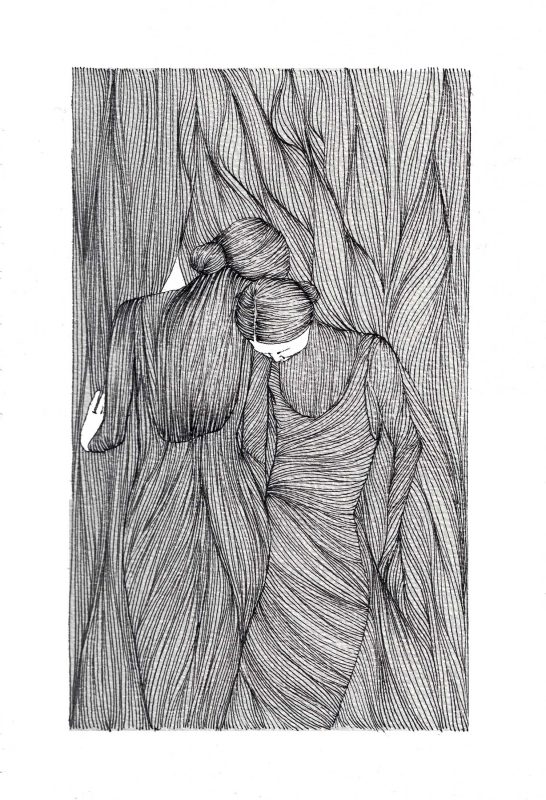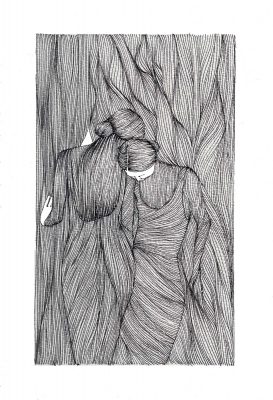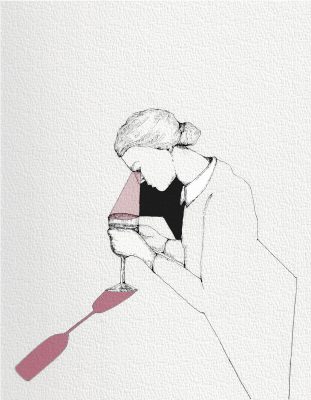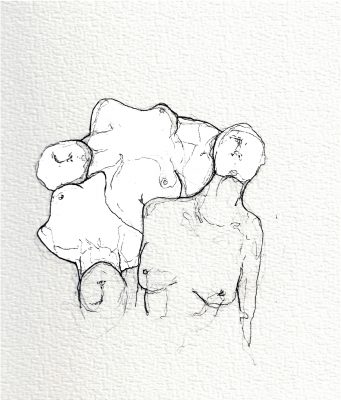Interview
Interview: Katja Hoffmann
In conversation with Berlin based art teacher Katja Hoffmann.
Can you talk about your journey into or interest the arts?
To see the world on another level, to reconcile it like a mosaic, to mix it or even alienate it, that’s art to me. From this point of view, I have already discovered art in my very early years.
Do you use a sketchbook? I’m interested in what a sketchbook means to you and your work?, or how people develop their ideas.
Oh, yeah, I do. Very often, actually. A sketchbook opens up to a world of its own, reflects life phases and artistic experiments in all its nuances and fine details.
Sometimes I’m surprised when I take a look atan older sketch book. Then it is not unusual that I take up and redefine already rejected ideas. Like the time for them has just come… or for me.
Can you talk about the influences upon your work?
I could now name some inspiring artists, architects, songs, poems, books and much more. That would blow the frame, though. More importantly, in my view, everything has an influence on artistic creation.
What exactly gets through to someone and shapes an idea depends on the personal filter. The human, especially the human body, plays the major role in my pictures. The body as an instrument that can be frozen in a certain gesture and attitude and that can express sensations and conditions.
That’s why I love photography. I often use photographs as a basis for my pictures and compositions. The way people are expressed with the language they speak in a mimic and gestural way, I transfer to an abstract and often more exaggerated version.
What themes are you exploring through your work, there is clearly a theme of the imaginary and fantastical?
People inspire and fascinate me in all their facets and with all their moods, feelings, fears, relationships, sensitivities, and above all little weaknesses. That‘s the center of my work.
A picture will not become exciting for me until an irritating moment has been added. You could see it as some kind of contrast.
Something that makes the obvious on another level.
This irritating moment finds expression in the surreality or imagination.
Your work is mainly monochromatic, can you talk about why this is the case?
The line is the most important imaginative in my drawings. It´s what I’m focusing on and what I‘m playing with.
The filling of the surfaces with tender, almost fragile textures and scrapers has only taken roots in my work over time. In my ideas, colour is rare and if very reduced. Maybe it’ll change someday.
How do you see the role of arts education developing?
As an art teacher, I can only say that a much stronger focus on artistic education should be placed.
This is not just about independent creation and artistic process, but rather about training awareness.
Only by practice and subsequent exchange, people get aware of seemingly obvious things such as, colour effects, for example.
Do you find the process of creating work relaxing or therapeutic? I’ve become increasingly interested in the relationship of the artist to their working patterns and environment.
Yes, I do. For me it’s both meditative and therapeutic. During the drawing, I’m completely in the moment in my own inner garden.





Do you like this artist?
If so, why not write a comment or share it to your social media. Thanks in advance if you can help in this way.